Abstract
Greater understanding of psychosocial predictors of the use of condoms among Hispanics is needed in prevention efforts related to the human immunodeficiency virus and sexually transmitted disease epidemics among Hispanics in the United States. A telephone survey was carried out in nine States that have large populations of Hispanics, using a stratified clustered random digit dialing sampling strategy. The survey yielded interviews with 968 Hispanic men ages 18-49 years. Of them, 361 (37.8 percent) reported at least one secondary female sexual partner in the 12 months prior to the interview. Predictors were identified of condom use by those men with their secondary sex partners. Key predictors of the subjects' condom use with secondary partners included carrying condoms; self-efficacy, or a measure of the subject's perceived ability to use condoms under difficult circumstances; positive attitude toward condom use; having friends who used condoms; and lack of symptoms of depression in the week before the interview (R2 = 0.35). Significant predictors of condom carrying were being comfortable in sexual situations, positive attitude toward condom use, and self-efficacy to use condoms. Less acculturated men had more positive attitudes toward condom use and carried them more than did more acculturated men. The researchers found encouraging levels of condom use with secondary sexual partners among Hispanic men with multiple partners.(ABSTRACT TRUNCATED AT 250 WORDS)
Full text
PDF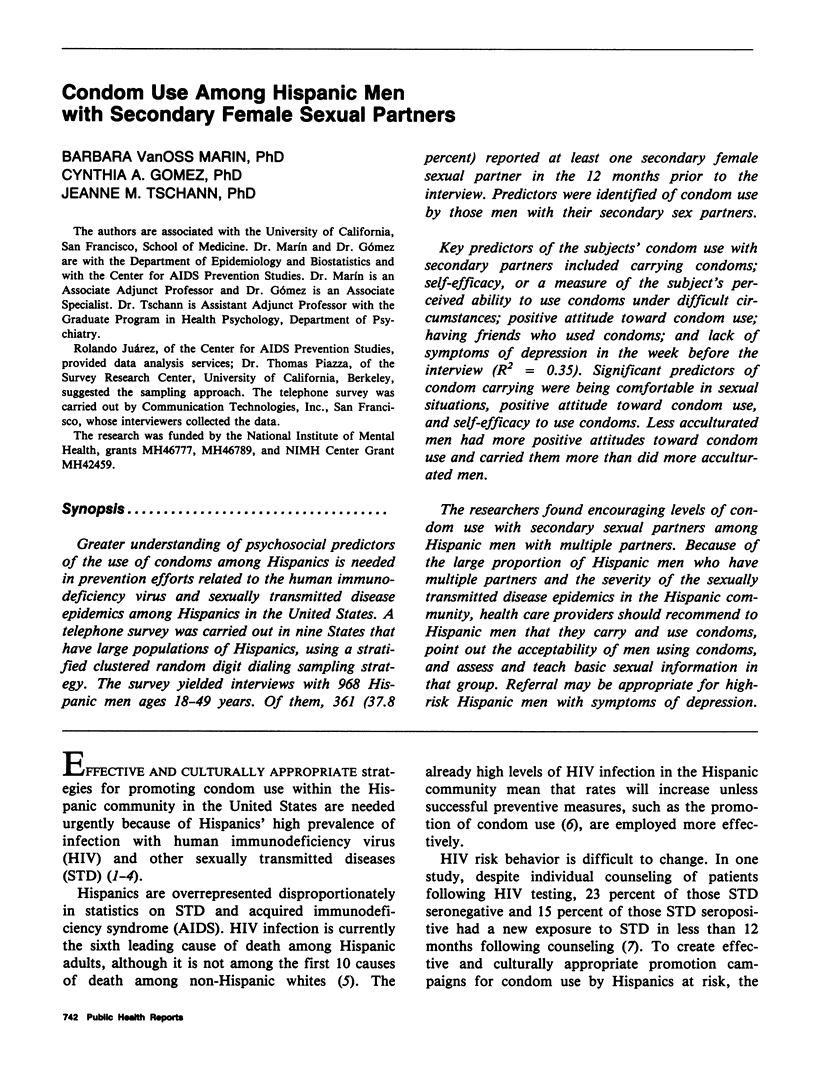
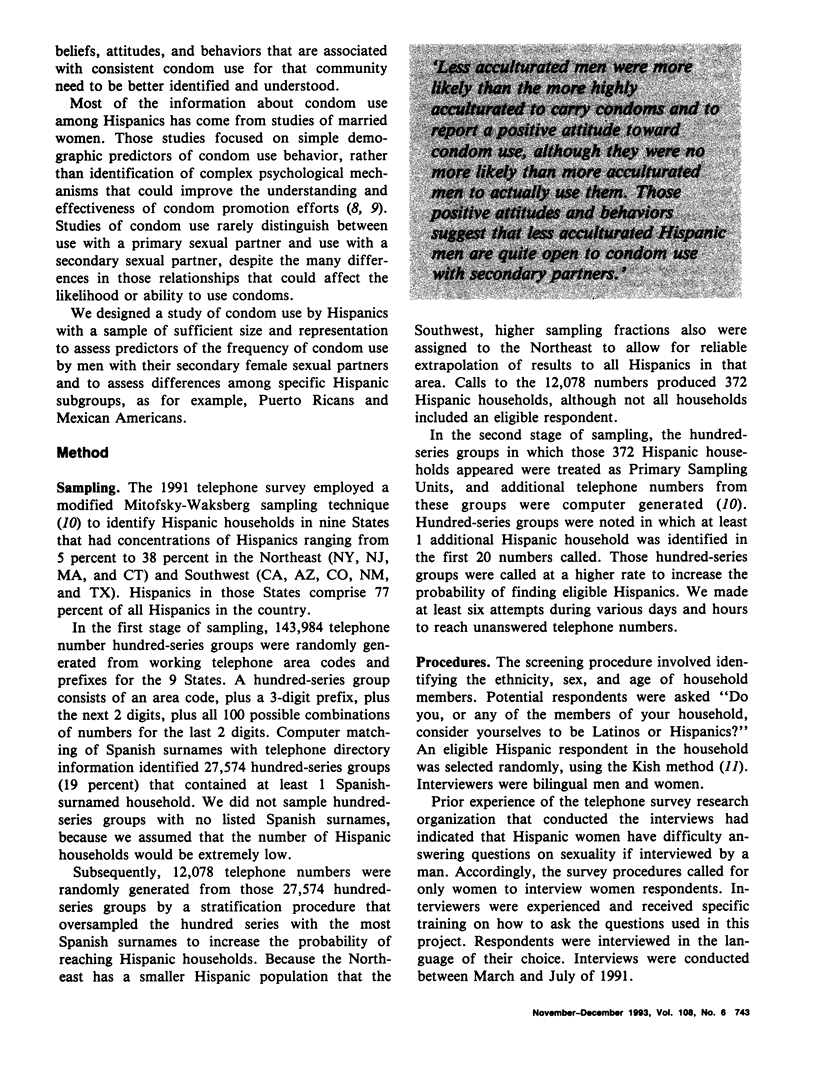
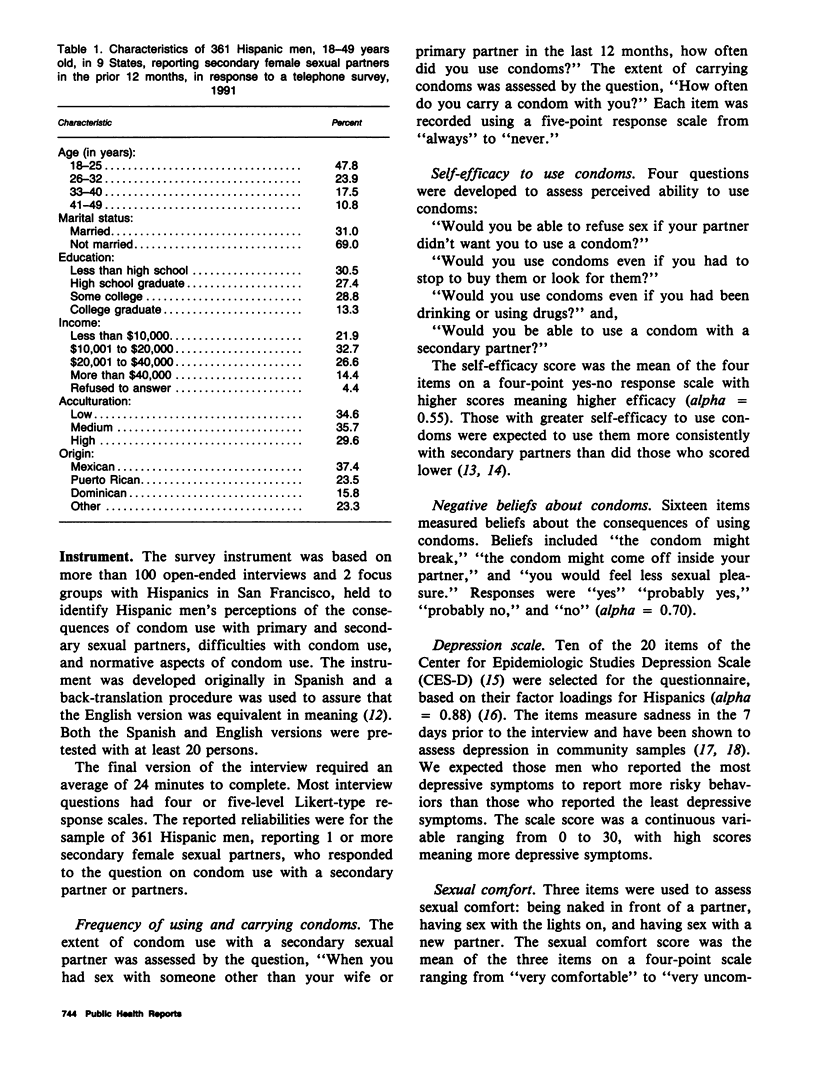
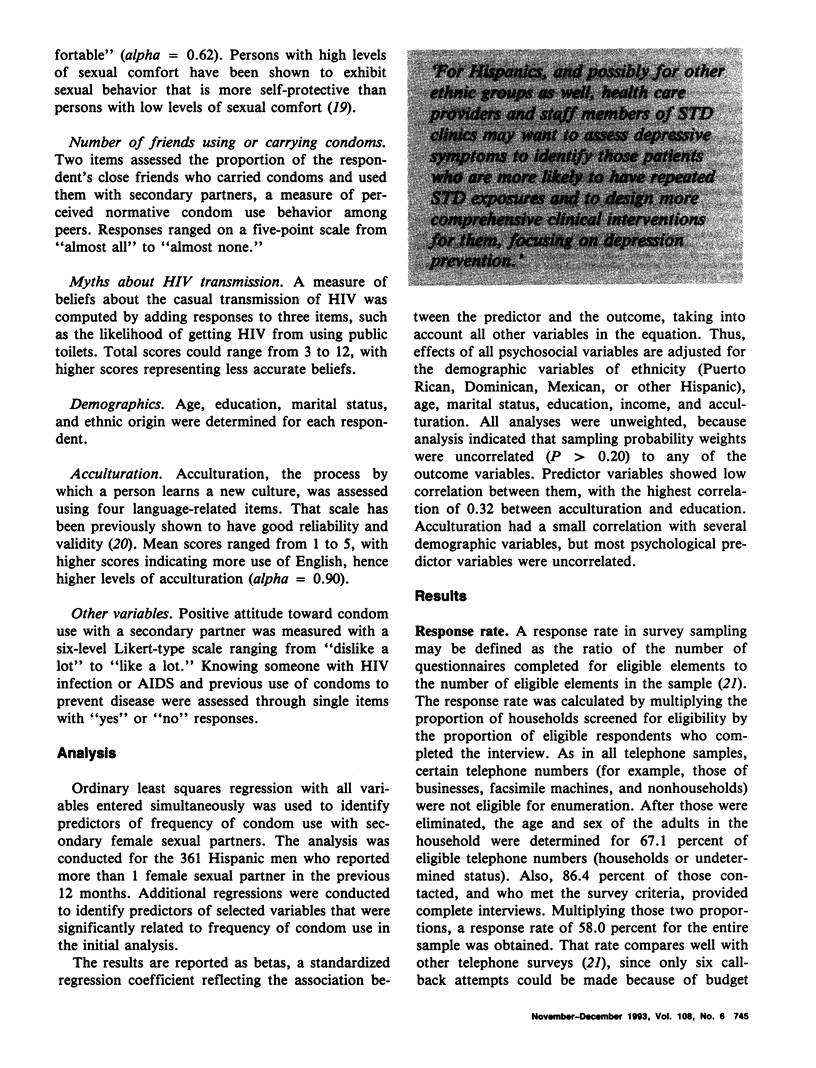
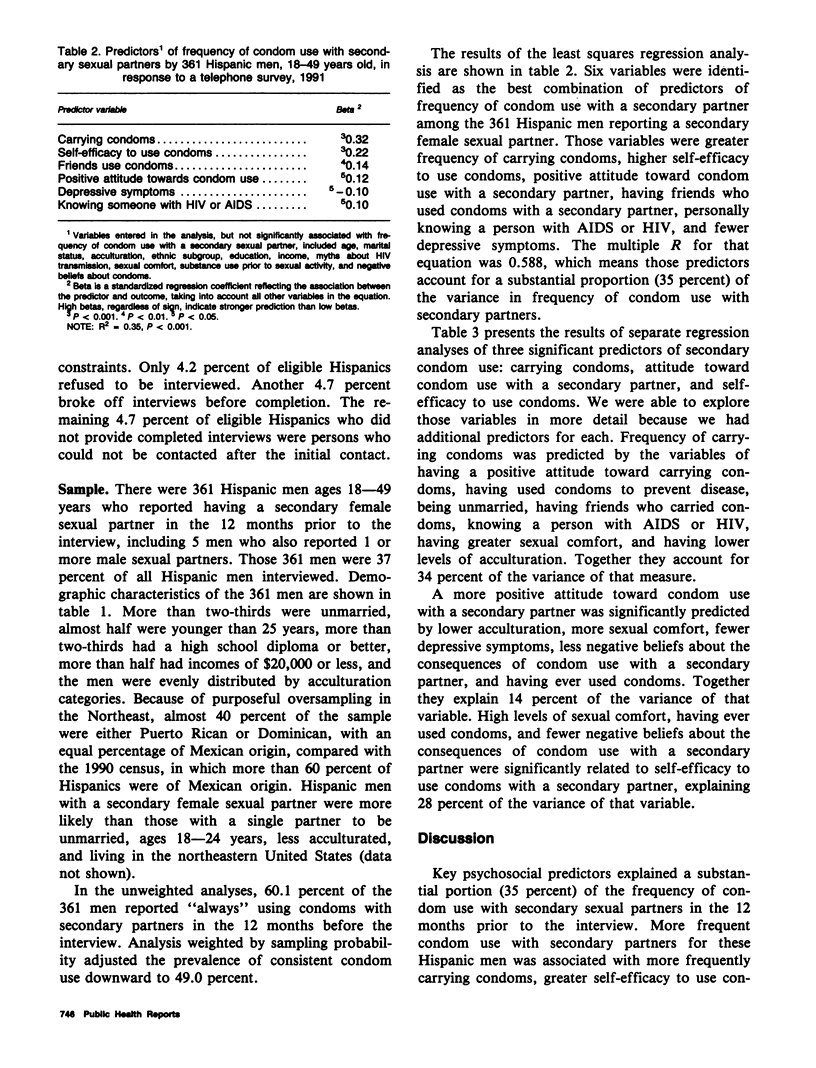
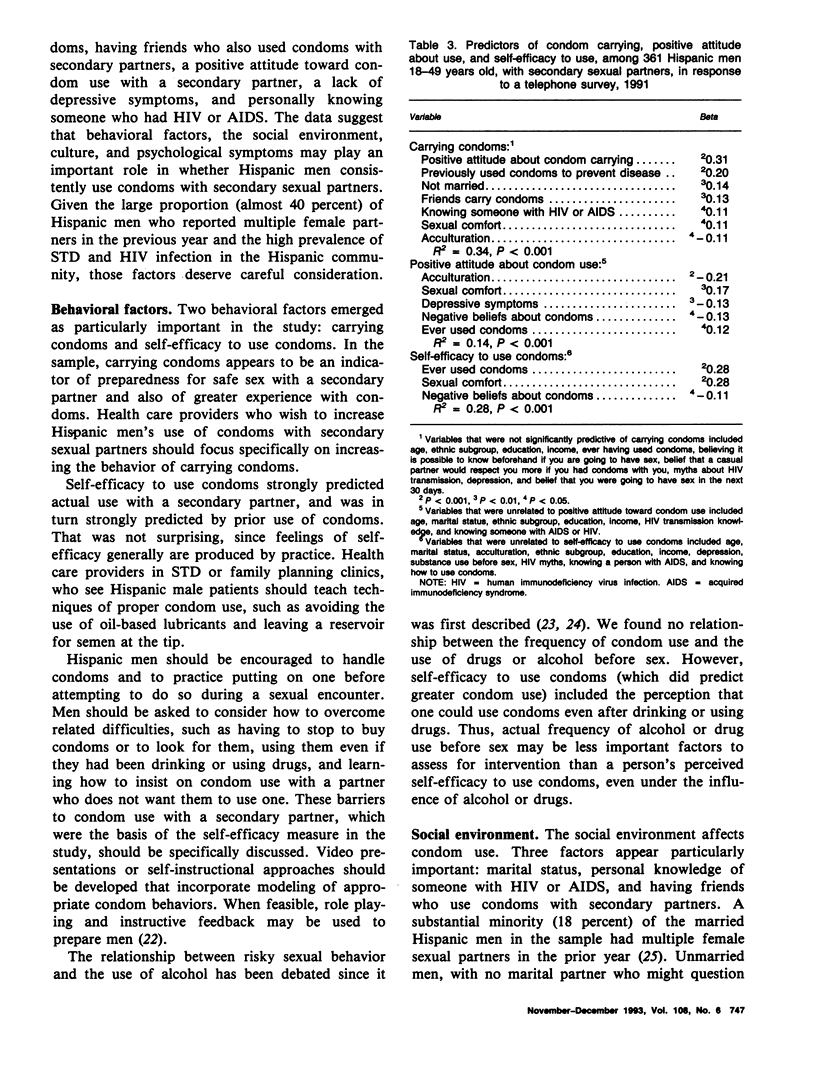
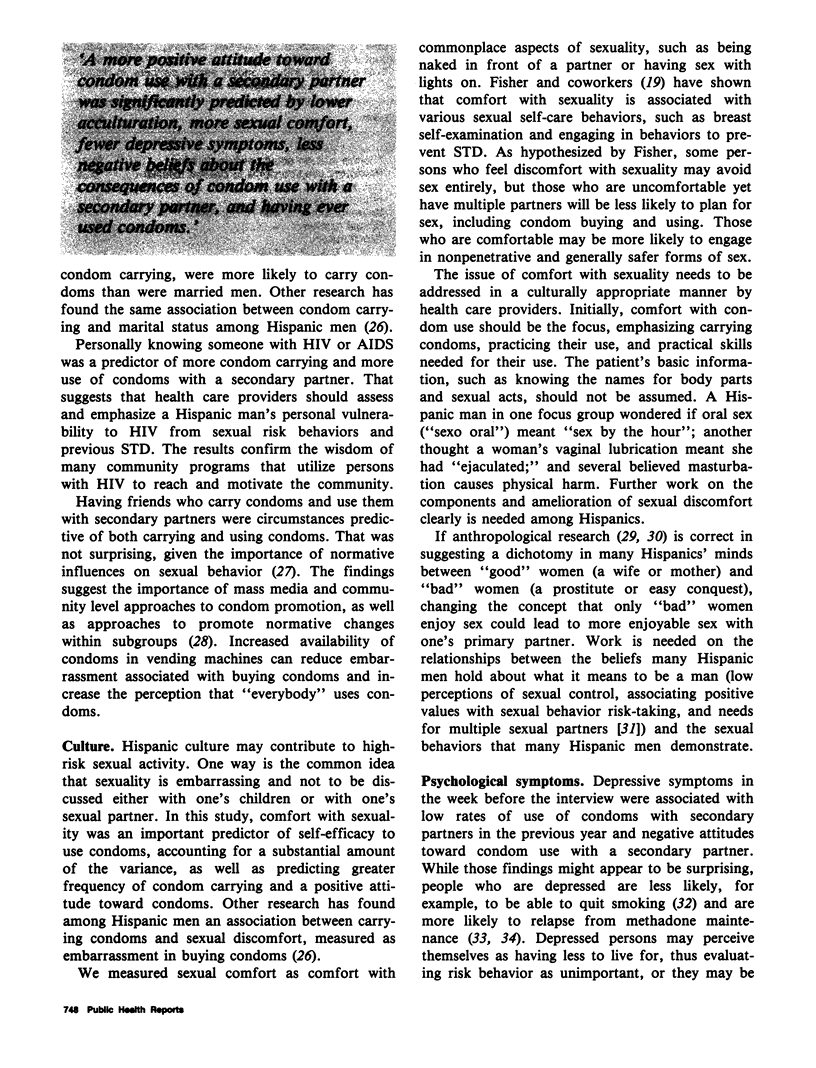
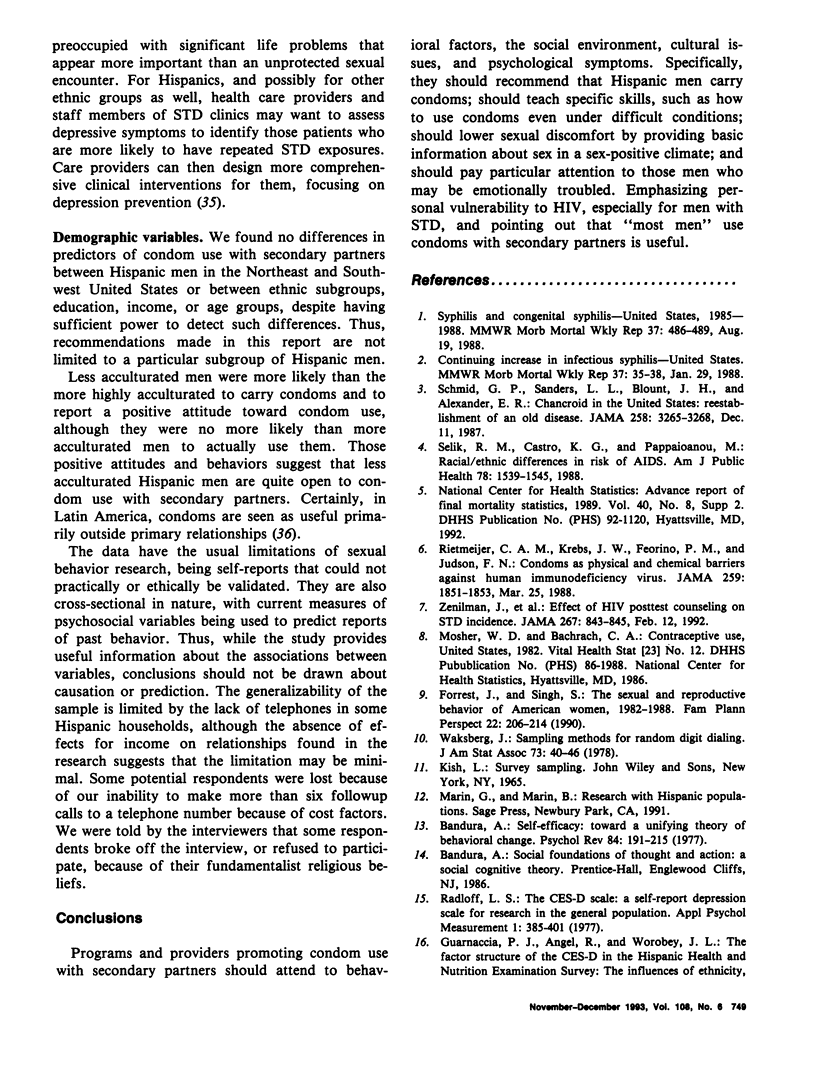
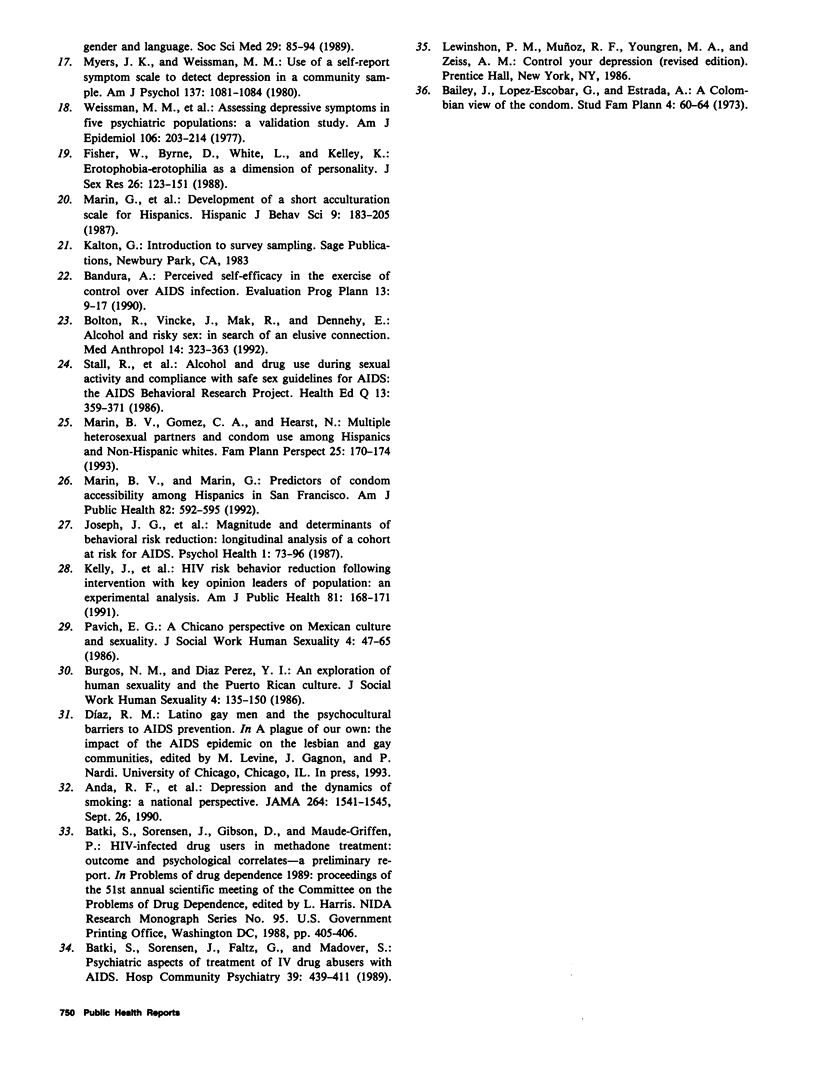
Selected References
These references are in PubMed. This may not be the complete list of references from this article.
- Anda R. F., Williamson D. F., Escobedo L. G., Mast E. E., Giovino G. A., Remington P. L. Depression and the dynamics of smoking. A national perspective. JAMA. 1990 Sep 26;264(12):1541–1545. [PubMed] [Google Scholar]
- Bailey J., Lopez-Escobar G., Estrada A. A Colombian view of the condom. Stud Fam Plann. 1973 Mar;4(3):60–64. [PubMed] [Google Scholar]
- Bandura A. Self-efficacy: toward a unifying theory of behavioral change. Psychol Rev. 1977 Mar;84(2):191–215. doi: 10.1037//0033-295x.84.2.191. [DOI] [PubMed] [Google Scholar]
- Batki S. L., Sorensen J. L., Faltz B., Madover S. Psychiatric aspects of treatment of i.v. drug abusers with AIDS. Hosp Community Psychiatry. 1988 Apr;39(4):439–441. doi: 10.1176/ps.39.4.439. [DOI] [PubMed] [Google Scholar]
- Bolton R., Vincke J., Mak R., Dennehy E. Alcohol and risky sex: in search of an elusive connection. Med Anthropol. 1992 May;14(2-4):323–363. doi: 10.1080/01459740.1992.9966077. [DOI] [PubMed] [Google Scholar]
- Forrest J. D., Singh S. The sexual and reproductive behavior of American women, 1982-1988. Fam Plann Perspect. 1990 Sep-Oct;22(5):206–214. [PubMed] [Google Scholar]
- Kelly J. A., St Lawrence J. S., Diaz Y. E., Stevenson L. Y., Hauth A. C., Brasfield T. L., Kalichman S. C., Smith J. E., Andrew M. E. HIV risk behavior reduction following intervention with key opinion leaders of population: an experimental analysis. Am J Public Health. 1991 Feb;81(2):168–171. doi: 10.2105/ajph.81.2.168. [DOI] [PMC free article] [PubMed] [Google Scholar]
- Marin B. V., Marin G. Predictors of condom accessibility among Hispanics in San Francisco. Am J Public Health. 1992 Apr;82(4):592–595. doi: 10.2105/ajph.82.4.592. [DOI] [PMC free article] [PubMed] [Google Scholar]
- Myers J. K., Weissman M. M. Use of a self-report symptom scale to detect depression in a community sample. Am J Psychiatry. 1980 Sep;137(9):1081–1084. doi: 10.1176/ajp.137.9.1081. [DOI] [PubMed] [Google Scholar]
- Rietmeijer C. A., Krebs J. W., Feorino P. M., Judson F. N. Condoms as physical and chemical barriers against human immunodeficiency virus. JAMA. 1988 Mar 25;259(12):1851–1853. [PubMed] [Google Scholar]
- Schmid G. P., Sanders L. L., Jr, Blount J. H., Alexander E. R. Chancroid in the United States. Reestablishment of an old disease. JAMA. 1987 Dec 11;258(22):3265–3268. [PubMed] [Google Scholar]
- Selik R. M., Castro K. G., Pappaioanou M. Racial/ethnic differences in the risk of AIDS in the United States. Am J Public Health. 1988 Dec;78(12):1539–1545. doi: 10.2105/ajph.78.12.1539. [DOI] [PMC free article] [PubMed] [Google Scholar]
- Stall R., McKusick L., Wiley J., Coates T. J., Ostrow D. G. Alcohol and drug use during sexual activity and compliance with safe sex guidelines for AIDS: the AIDS Behavioral Research Project. Health Educ Q. 1986 Winter;13(4):359–371. doi: 10.1177/109019818601300407. [DOI] [PubMed] [Google Scholar]
- Van Oss Marín B., Gómez C. A., Hearst N. Multiple heterosexual partners and condom use among Hispanics and non-Hispanic whites. Fam Plann Perspect. 1993 Jul-Aug;25(4):170–174. [PubMed] [Google Scholar]
- Weissman M. M., Sholomskas D., Pottenger M., Prusoff B. A., Locke B. Z. Assessing depressive symptoms in five psychiatric populations: a validation study. Am J Epidemiol. 1977 Sep;106(3):203–214. doi: 10.1093/oxfordjournals.aje.a112455. [DOI] [PubMed] [Google Scholar]
- Zenilman J. M., Erickson B., Fox R., Reichart C. A., Hook E. W., 3rd Effect of HIV posttest counseling on STD incidence. JAMA. 1992 Feb 12;267(6):843–845. [PubMed] [Google Scholar]


